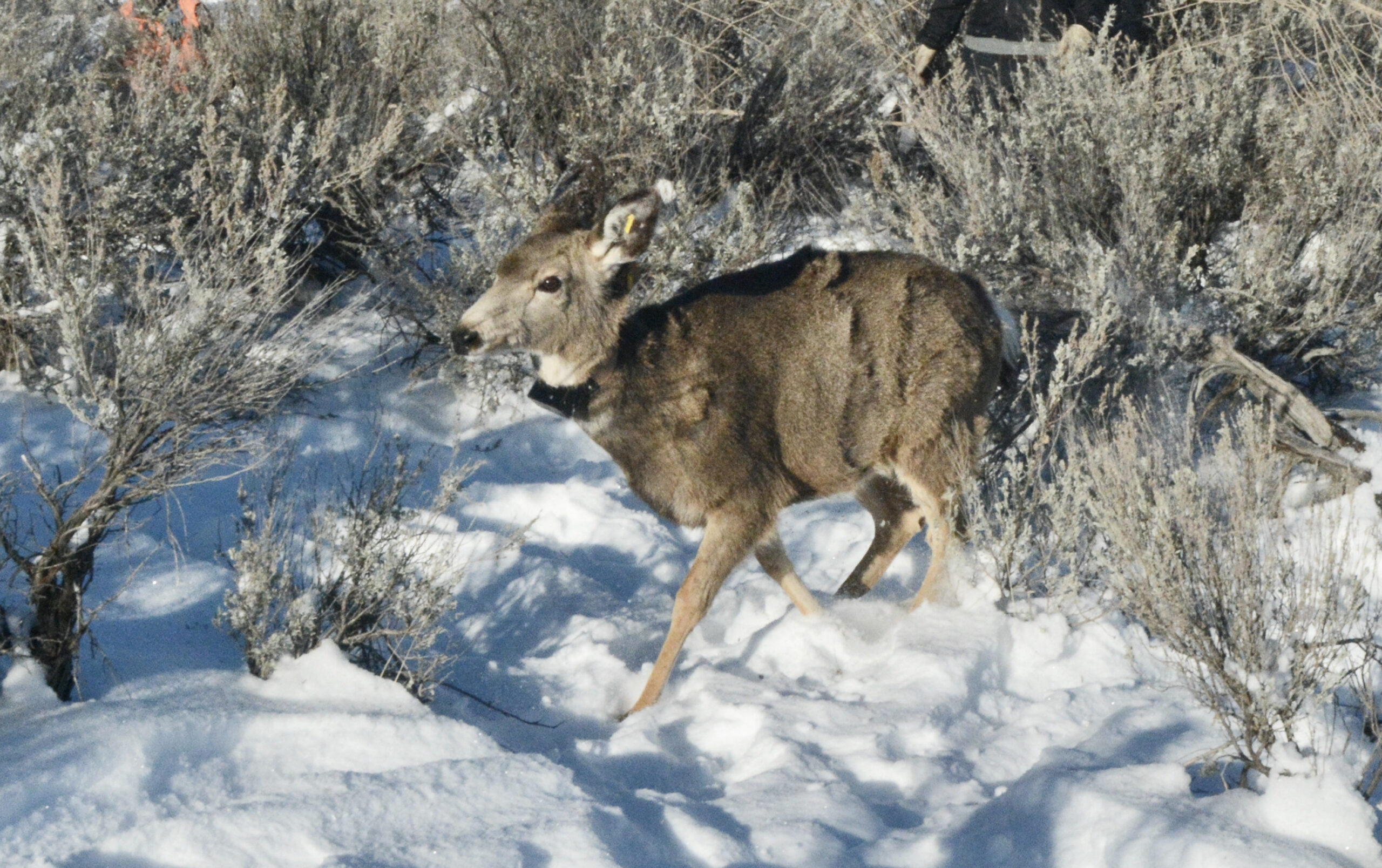Below is a news release from the Idaho Department of Fish and Game.
Statewide winter survival for mule deer fawns and elk calves fitted with tracking collars has shown to be slightly higher than average through the end of March.
“From a statewide perspective, winter survival is tracking very close to what we’ve seen prior to last year’s brutal winter,” said Fish and Game’s Deer and Elk Coordinator, Toby Boudreau. “That should help eastern Idaho’s mule deer herds, but it’s going to take more than one mild winter for them to recover.”
A glimpse into winter survival
Winter survival is typically the biggest single factor affecting mule deer herds, and the long-term average is about 60 percent of fawns surviving their first winter, but during hard winters that can be significantly lower. To monitor herds, Fish and Game biologists in early winter captured and collared 217 mule deer fawns and 151 elk calves in various parts of the state to track their survival over winter.
By the end of February, 92% of the collared fawns and 95% of the collared calves were still alive, and here’s how that compares with recent years:
- 72% fawns and 92% calves in 2022-23
- 84% fawns and 92% calves in 2021-22
- 83% fawns and 92% calves in 2020-21
- 84% fawns and 92% calves in 2019-20
- 78% fawns and 93% calves in 2018-19
- 88% fawns and 91% calves in 2017-18
While the big story last year focused on the severity of winter and its impact on eastern Idaho’s deer herds, this year shows a little more optimism.
“Last year was a really hard year on our southeastern herds,” Boudreau said. “By March 9 of last year, the southeast portion of the state was at roughly 145% of its typical snowpack. Critical deer and elk wintering ranges—including Portneuf, Montpelier, Georgetown Summit and Blackfoot WMA —were hit hard by the winter weather.”
Rebounding from harsh winters
The best thing for recovering deer herds following a brutal winter is a series of mild winters that follow. This winter definitely fit that description, and thus gave recovering mule deer herds in east Idaho some much needed reprieve, and the latest reports from Fish and Game collar data support that.
Through the end of March 2024, 82% of fawns and 93% of calves (with tracking collars) have neared the finish line on another winter. But the race isn’t over just yet.
Depending on weather, March and April are often when fawn and calf mortality is the highest because the young animals’ fat reserves are largely depleted, and their digestive systems need time to convert to digesting fresh, green forage.
“Right now, in the middle of April, things are looking promising for both deer and elk,” Boudreau said. “We’ll know for sure what survival will look like in the coming month, after we’ve tallied up the final numbers. But this is exactly what we were hoping for—a much-needed mild winter.”
For mule deer fawns in particular, a stretch of cold, wet weather in the early spring can substantially decrease survival, and biologists can see winter-related mortality as late as May.
Why it all matters
Fawn and calf survival is critical to growing herds or sustaining current populations. The survival of young mule deer has a direct relation to the fall deer harvest because yearling bucks typically make up a significant portion of the overall mule deer harvest.
In addition to all that, knowing how many collared animals die each winter gives Fish and Game wildlife biologists a good estimate of how the rest of the population is faring. And knowing just how many animals—in this case, deer and elk—are out on the landscape is crucial when it comes to setting seasons and providing hunting opportunities.
For more information on this topic and other deer and elk information, check out the video below, or go to Fish and Game’s State of Deer and Elk webpage. Fish and Game have put together a robust series of 10 videos that highlight everything you’ve ever wanted to know about deer and elk, including why surveying matters to why/when Fish and Game step in to feed wintering herds.
(Photo credit: Idaho Department of Fish and Game)
